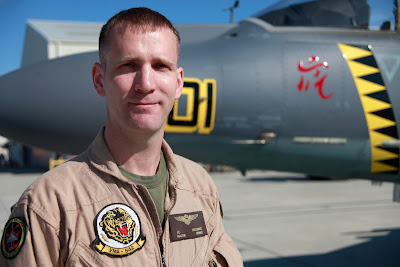via News.com.au.
THE Royal Australian Navy has
produced a secret $4 billion "wish list" that includes an aircraft
carrier, an extra air warfare destroyer and long-range Tomahawk cruise
missiles for its submarine fleet.
The RAN wants a third 26,000 tonne amphibious ship equipped with
vertical take-off jet fighters, a fourth $2 billion air warfare
destroyer and cruise missiles that could strike targets thousands of
kilometres away.
The list comes at a time when the RAN can barely find enough sailors to crew its existing fleet.
It
also coincides with a Federal Government push to save $1 billion a year
in defence costs as well as a government-ordered White Paper which will
set the spending priorities for the next two decades.
According
to insiders, the Government was unimpressed by the RAN's push for more
firepower at a time when the Government is aiming to slash spending.
"The navy is out of control," one defence source said.
It is understood that the wish list was the final straw in the tense
relationship between the Government and Chief of Navy Vice-Admiral Russ
Shalders - who will be replaced in July by Rear Admiral Russell Crane.
Admiral Shalders last year also pushed hard for an expensive US-designed destroyer, but lost out to the cheaper, Spanish option.
Taxpayers
will spend more than $11 billion to provide the RAN with the two
26,000-tonne amphibious ships and three air-warfare destroyers equipped
with 48 vertical launch missiles.
The two big ships, known as
Landing Helicopter Docks, are designed for amphibious assaults and will
be fitted with helicopters and be capable of carrying more than 1000
troops and heavy vehicles such as tanks and trucks.
The RAN wants a third ship to carry vertical take-off fighter jets.
Its last aircraft carrier, HMAS Melbourne, was decommissioned in 1982 before being sold for scrap.
The latest ships are 10m longer and 8m wider than the Melbourne and will be built in Spain and fitted out at the Tenix shipyard in Melbourne.
The Spanish navy will carry 30 Harrier jump jets aboard its similar ships.
They
will each cost more than $1.7 billion. The fighters would cost about
$100 million each. The destroyers will cost about $2 billion each,
taking the total cost to more than $4 billion.
Tomahawk cruise
missiles cost about $1 million each and can carry a 450kg conventional
or 200 kiloton nuclear warhead more than 2500km.
In the past Australia has stayed away from long-range strike missiles for fear of triggering a regional arms race.
The
wish list is what the RAN would like to see make up part of the White
Paper process which will later this year provide a strategic blueprint
for the defence of the nation for the next 20 years.
That process will direct new spending worth more than $50 billion over the next 10 years.
Lets read between the lines on this.
First there is no reason why the RAN can't operate F-35B's off their current ships. Perhaps not as many as would be ideal but they will be able to.
Second, there is a definite trend going on here. I've said it before (Aussie Digger disagreed) but I'll say it again. The Australian Navy is inches away from creating a Marine Corps.
Last, this move to station Marines in the Northern Territories just adds to future interoperability. The more the Aussies train, observe and work with US Marines the more obvious it will be that this is the glaring hole in their force capabilities.
But more than just a need for F-35's and a Marine Corps the Aussies are finally coming to grips with the cold hard facts that warfare in the Pacific demands a Navy and Marine team. If you are to actually engage in expeditionary warfare over the vast distances that is the Pacific then you need ships, planes, Marines and subs.
Much to the chagrin of the Royal Australian Air Force, the Royal Australian Navy is starting to put it together...and unlike the Europeans, the Australians realize that they have a potential foe that is a peer --- not some backwater Middle Eastern or African dictator.
NOTE:
What was left off the list is the fact that the Pacific is seeing an alarming build up in military power. The traditional powers...Japan, S.Korea and China are starting to see the minor power arm up rapidly. Singapore is the Israel of the Pacific and might have the most technologically advanced force in the region. Vietnam, Thailand, Malaysia and the Philippines all see China and each other as threats---and left unsaid are the ancient animosities that course throughout the region. The Pacific is a future powder keg.






